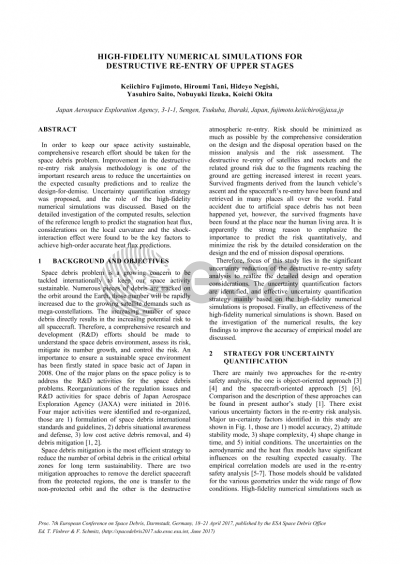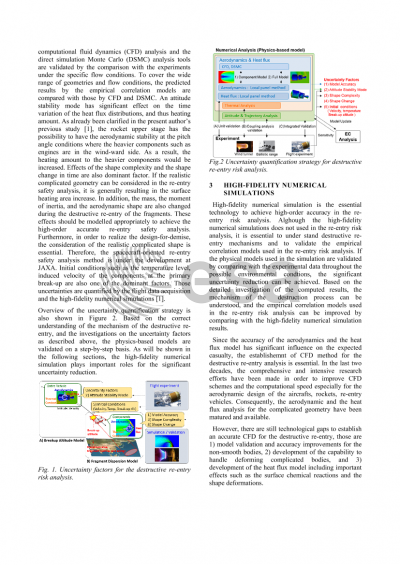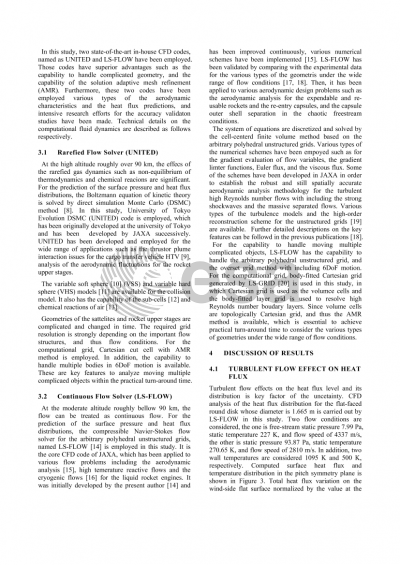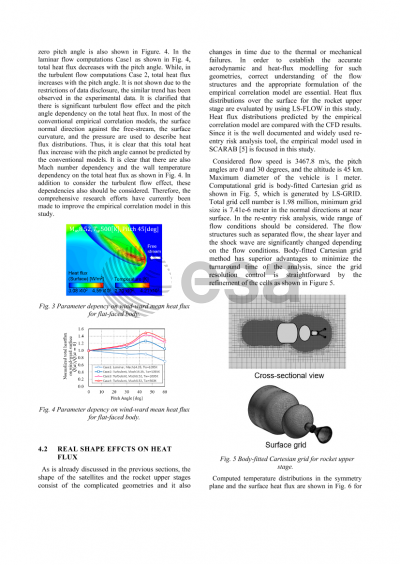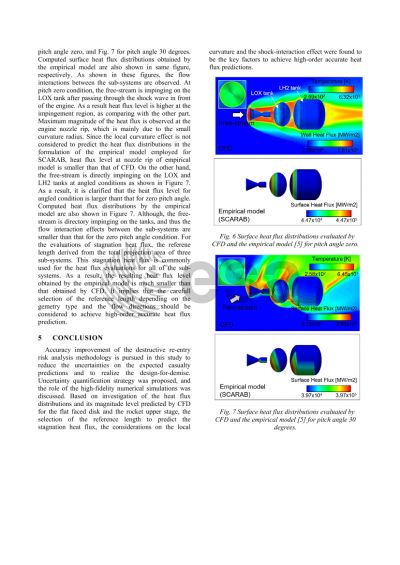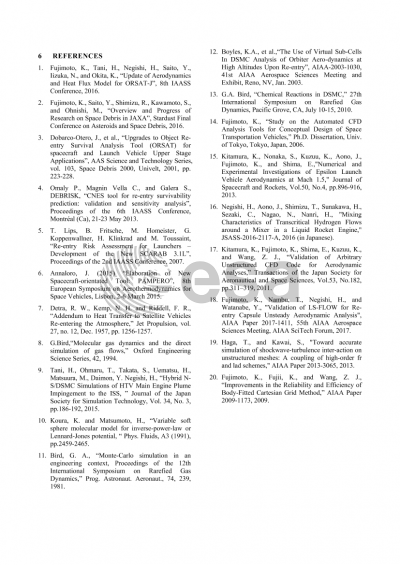Document details

Abstract
In order to keep our space activity sustainable, comprehensive effort should be taken for the space debris problem. Improvement in the risk analysis methodology for the destructive re-entry of space-crafts and launch vehicle upper stages is one of the important research areas. In this research, important uncertainty factors are identified, and its quantification strategy is presented. There are major five uncertainties, 1) attitude stability mode, 2) initial conditions, 3) model accuracy, 4) shape complexity, and 5) shape change. Common challenges in this field are to obtain the data and improve the physical model in order to consider complicated physical effect and to reduce epistemic uncertainties. Core approaches are the ground and flight experiment and the high-fidelity numerical simulations. Based on the obtained experimental data and the simulated results of the high-fidelity model, assumptions and analysis conditions are re-considered, and lower model used in the current risk analysis is improved in accuracy.
By using high-fidelity numerical simulations such as CFD and DSMC, the complicated real shape effect, and 6 degree-of-freedom motion and the aerodynamic / aerothermal interaction between the components can be considered accurately. In Japan Aerospace Exploration Agency (JAXA), development of the spacecraft-oriented re-entry survivability analysis tool is under the way. Validation of the lower fidelity model is carried out by comparing with the high-fidelity model result.
Some of the findings related to the identified uncertainty factors are shown. Advantages to employ high fidelity numerical simulation are also discussed.
Preview
